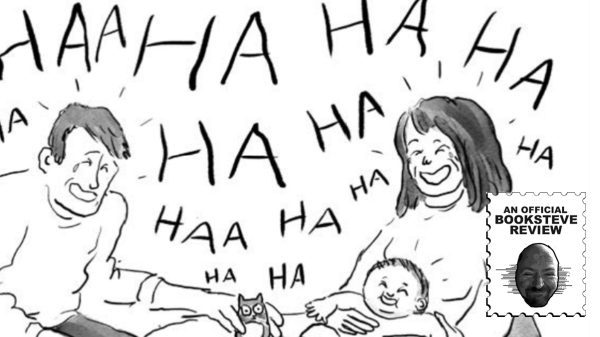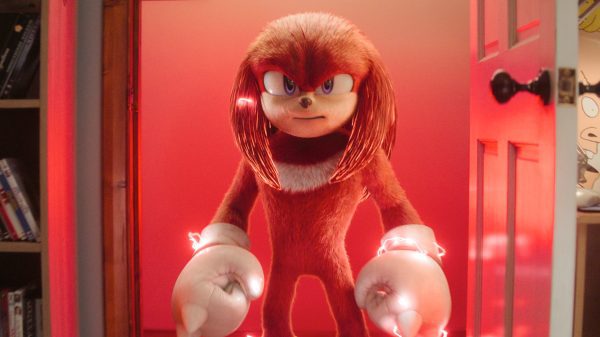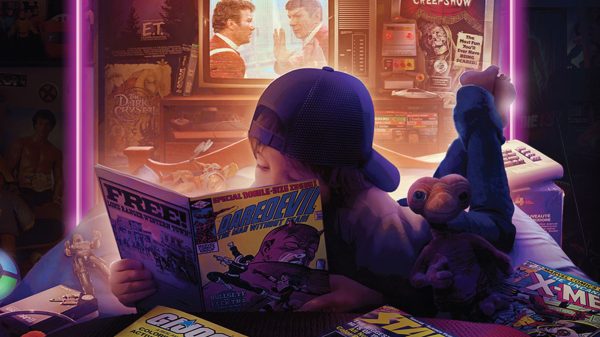 A fair number of sci-fi and horror pictures in the 80s betray worries over television: it fools us, it makes us violent, it brainwashes us, it substitutes illusion for reality, and it even provides a dimensional gateway for aliens or demons.
A fair number of sci-fi and horror pictures in the 80s betray worries over television: it fools us, it makes us violent, it brainwashes us, it substitutes illusion for reality, and it even provides a dimensional gateway for aliens or demons.
Why these fears?
Sociologists point first to the growing popularity of cable television.
According to Encyclopedia Brittanica, a mere 8% of American households had cable in the early 70s, and only 23% in 1980, but this doubled to 45% by 1984 and hit 60% by 1989.
MTV debuted in summer 1981, but what seemed innovative in some quarters seemed inane in others. Is the proliferation of media channels merely the proliferation of media junk?
Black Flag’s “TV Party” video, a hit on MTV in 1982, depicted drunken idiots wasting time with television. A typical lyric: “I don’t even bother to use my brain anymore!”
More controversy arrived with the deregulatory Cable Act in 1984. Now, with networks no longer required to give “equal time” to differing opinions, TV shows became more controversial than ever.
There had been controversial shows in the 70s (M*A*S*H, Mary Tyler Moore, and All in the Family come to mind) but 80s shows took crude and sexual content to new extremes. Married… With Children (debuting spring 1987) was the most outrageous of all.
Another effect of deregulation was freedom to combine commercial content with regular programming. Thus the modern “infomercial” was born in 1985.
No wonder that Americans and Canadians began using the term “trash TV” by the late 1980s to describe the pervasiveness of brain-deadening television content. Tom Vu, anyone?
It’s also worth mentioning the strange “Dream Season” of Dallas, possibly the most watched show of the decade. At the start of the 1986-87 season, it was revealed that the entire previous 1985-86 season never actually occurred; it was only a dream! I mention this because it might have contributed to the idea – found in several films discussed below – that when you’re watching TV you can’t tell illusion from reality.
Many 80s genre films make references to television. Sometimes, foolish commercials or shows indicate the correlating foolishness of the North American public, as in Looker (1981), The Stuff (1985), and RoboCop (1987).
But my concern will be films where the television itself gets the blame: it enables malevolent forces to invade our homes or control our brains. Most of these films are scary, gory, and good
POLTERGEIST (1982)


Who hasn’t imagined evil shapes or subliminal messages in TV static? If you haven’t, you will after you see Poltergeist. Even the promo posters made TV static seem scary. The poltergeist(s) aren’t bound solely to the television, but it’s where they start.
A young girl is the first victim, which perhaps betrays parental fears of children spending too much time in front of, or getting overly influenced by, their sets.
An early comical scene involving dueling TV remote controllers on the same wavelength seems to set up the idea that television equals trouble.
HALLOWEEN III (1982)


Possibly the oddest entry of the Halloween franchise, this Season of the Witch story involves Pagan occultists who sell strange Halloween masks to kids and prepare a special show to be viewed only while wearing the masks.
What happens when you wear the mask and watch the show? I’ll leave out the details, but let’s just say that you and anyone around you won’t do any more trick-or-treating that night, or ever.
The film is supernatural but television technology itself is part of the story, with evil microchips getting triggered by evil broadcast waves.
VIDEODROME (1983)


A mysterious pirate television station broadcasts extreme sexual and violent shows to lure and destroy the supposed degenerates who are drawn to this stuff.
Our hero investigates the mysterious signals and is by turns fascinated and disgusted by what he sees. He first hopes to profit from the depravity but he soon finds himself unable to distinguish reality from illusion. One of the broadcasters may be an alien or monster – or maybe not? A helpful professor may “exist” only on videotape.
Taking the conflation of reality/illusion a step further, Canadian writer-director David Cronenberg depicts humans melding with technology: as illusion and reality become indistinguishable, so do machinery and flesh.
Videodrome is the best film on this list: frightening, disgusting, and thought-provoking all at once.
TERRORVISION (1986)


A television set and satellite antenna get a lot of attention in this flawed but entertaining satire set in a farcical suburbia.
Dad makes a faulty adjustment in the roof antenna and, wouldn’t you know it, the antenna attracts an evil alien blob who had been converted into energy particles.
Now the blob can enter or exit the television as he pleases, and among this family of empty-headed idiots, it pleases him just fine.
Television mostly figures into the first half, and media of all types is lampooned. Good 80s theme song for the opening credits.
DEMONS 2 (1986)


Its predecessor, Demons (1985), was set in a movie theater where patrons are attacked by – or transform into – hideous demons. Now in this sequel something similar happens, but via television to residents in a big apartment building.
As with Poltergeist and TerrorVision, television figures mostly into the first parts, being the initial gateway for the evil intruders. Some excellent effects depict demons pushing their heads and hands through a “stretched” television screen.
As with Poltergeist and Halloween III, kids are specifically imperiled, almost as a warning against negligent parents who use television as a babysitter.
Historical note: the film is directed by Dario Argento’s son. One of the kids is played by Argento’s daughter Asia at age 10.
THE VIDEO DEAD (1987)


This good direct-to-video zombie picture gives more attention to an actual television set than any other film on our list. It’s a dilapidated black-and-white set which only seems to show clips from something called “Zombie Blood Nightmare.”
As you’ll guess, the zombies can see us through the screen. And they will emerge from it.
The film could have been clearer about the set, like whether it contains a separate dimension or is a gateway to one. But like other films on the list, it plays on the idea of TV addiction: it gets inside your head so that you can’t bear to destroy it.
The film also suggests what may be a symbolic solution: place a mirror against the screen so that the television (and whatever’s on) reflects back upon itself.
THE BRAIN (1988)


This surprisingly scary sci-fi horror picture features the doctor from Re-Animator teaming up with an evil alien brain.
They use a show ironically titled “Independent Thinking” to brainwash viewers, to impel murder and suicide, or to lure unsuspecting fans to the studio where their minds will be consumed.
The alien brain is telepathic but only through television: its thoughts (and commands) appear as words on a nearby screen. The movie features ominous shots of broadcast antennae.
Interestingly, it’s the adults who are addicted to television and the teens who avoid it. Can the teens save the day?
SHOCKER (1989)


While it never appears on any lists of Wes Craven’s best, Shocker is among the horror icon’s most daring films. It starts out serious with some brutal murders, and then grows increasingly nutty.
The occultist killer apparently contacts a demon through a customized television set. The demon helps the killer survive the electric chair and transform himself into a static ghost, first able to possess people he touches and then able to project himself into people’s televisions. “I’m nationwide now!” he boasts.
He can fly out of a TV set to kill, then back into the set to hide. But what if our hero gains that same power? And what if our hero obtains a remote control?
It’s a mishmash of a film, but it’s never boring. Like other films on this list, it prominently features shots of broadcast antennae (complete with Danger signs), and it suggests TV distorts perceptions of reality vs. fantasy or dream.
REPOSSESSED (filmed 1989, released 1990)


This underrated Exorcist parody is best known for co-starring Linda Blair (while she was still making the real Exorcist series) alongside Leslie Nielsen speaking in a German accent.
The devil from the original Exorcist has returned to possess Regan 17 years later. But he’s a modern devil now, and he intends to use television – specifically an ostensibly Christian show run by a sham televangelist – to possess thousands of viewers at once.
We get ominous shots of a giant broadcast antenna and a corrupted television studio. But if the wily devil can use television, so can the resourceful priests who recruit all manner of religious and spiritual leaders from around the world to join in a live concert broadcast. Could even Satan himself resist?
It is notable that television has the potential to save us as well as damn us, perhaps an acknowledgement at the end of the 1980s of the medium’s power and persistence.
SEE ALSO:
MIND BENDERS (1987)
This Canadian picture resembles The Brain in depicting adult authorities hoping to brainwash unruly teens, but here rock music rather than television is used.
THEY LIVE (1988)
John Carpenter’s nutty sci-fi picture joins several of those above in depicting aliens brainwashing us through mass media, though television plays only a small part. At the end, television may even show us the truth.





































































































You must be logged in to post a comment Login